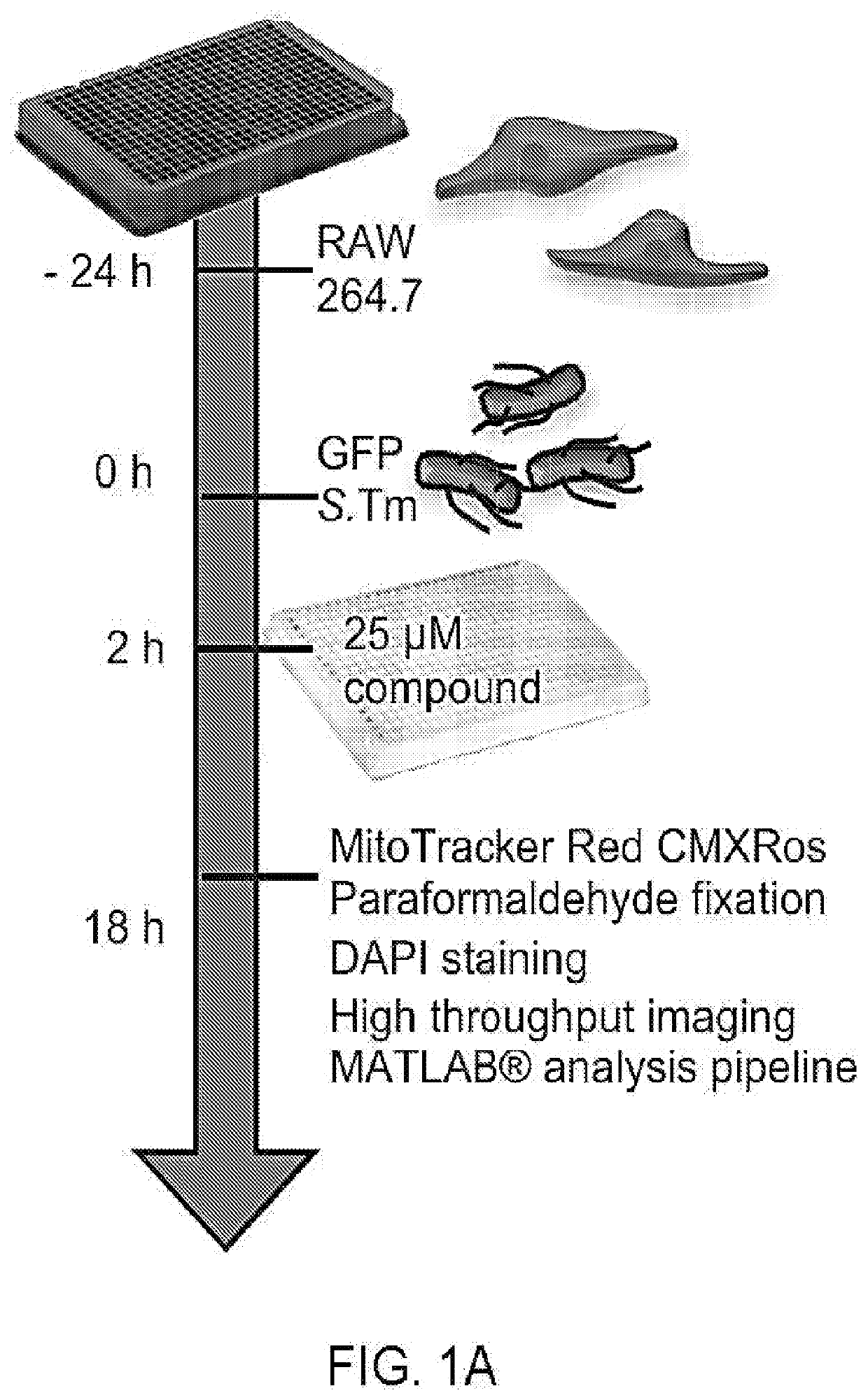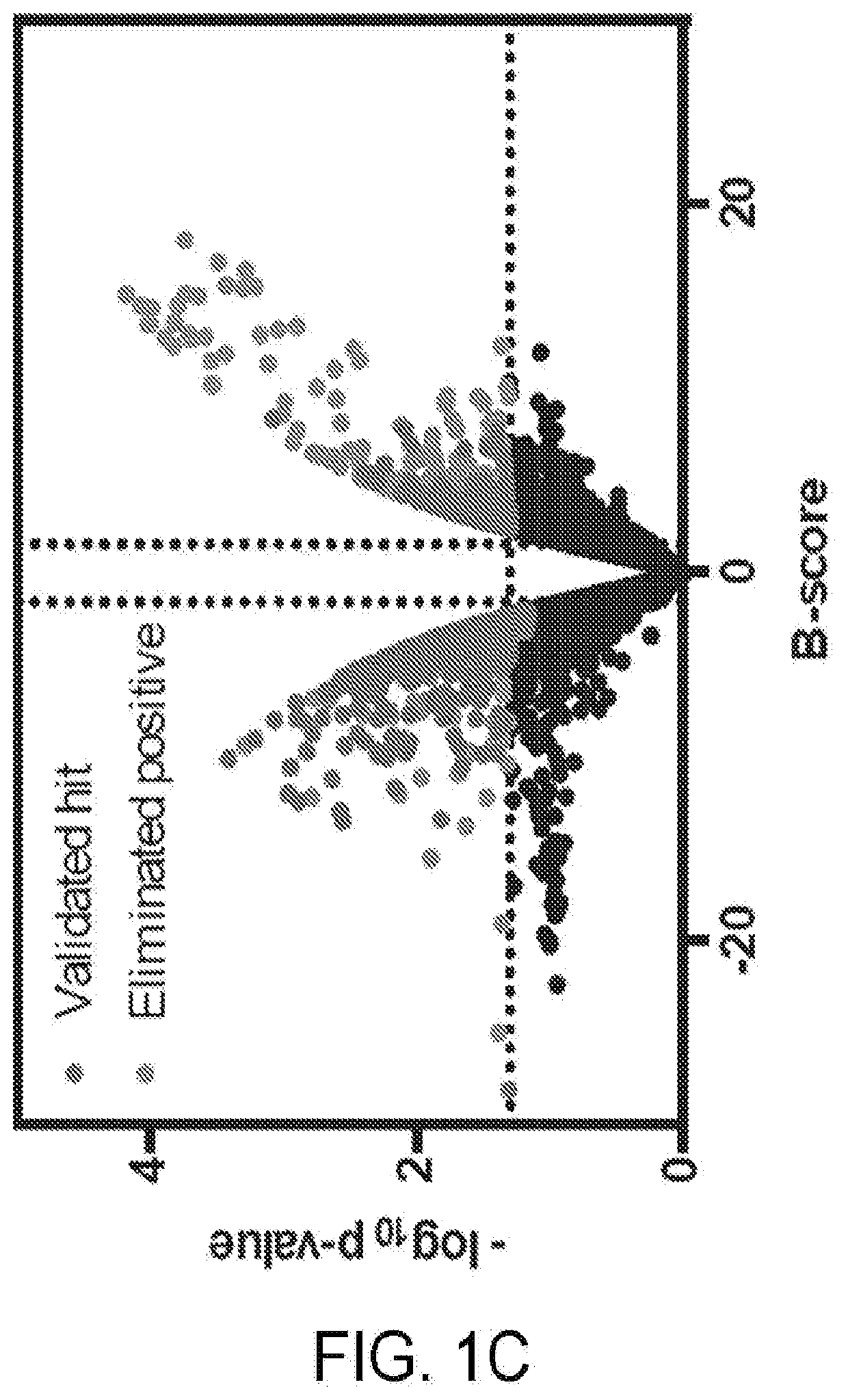Small molecule inhibitors of bacterial efflux pumps and methods of using same
a technology of efflux pump and small molecule inhibitor, which is applied in the direction of antibacterial agents, instruments, peptide/protein ingredients, etc., can solve the problems of strong resistance selection, abandonment of empirical screening of natural products, and recent attempts at identifying new drugs, so as to achieve the first value of cellular infectivity and cellular infectivity
- Summary
- Abstract
- Description
- Claims
- Application Information
AI Technical Summary
Benefits of technology
Problems solved by technology
Method used
Image
Examples
example 1
nt of SAFIRE, a Screen for Anti-Infectives Using Fluorescence Microscopy of IntracellulaR Enterobacteriaceae
[0079]A high-content, high-throughput fluorescence microscopy-based screening platform to assay S.Tm load within macrophages was developed (FIG. 1A). RAW 264.7 murine macrophages, a widely used cell line for bacterial infection studies, were infected with bacteria in a standard gentamicin protection assay. The Salmonella expressing GFP driven by the sifB promoter was incubated with the compound beginning at 2 hours post-infection. At 18 hours post-infection, cells were stained with MitoTracker Red CMXRos as a marker of macrophage vitality and processed for fluorescence microscopy. Stained with DAPI. A MATLAB®-based algorithm was developed to quantify infection (FIG. 1B) and compared to statistics to describe infection. Percentage of infected cells was determined by counting the proportion of macrophages within an image with at least 2 GFP+ pixels. Infection area was calculated...
example 3
do not Inhibit Bacterial Growth in Broth
[0083]Sixty of the top hits were repurchased and each confirmed activity by SAFIRE. Fifty-eight repurchased compounds were active with IC50s ranging from 0.5-10.5 μM. These top 58 hits were screened for activity against extracellular S.Tm grown in MHB broth (FIG. 2C). At 25 μM, none of the compounds reduced S.Tm growth. Even at 100 μM, only a few of the hits inhibited or reduced growth, which indicates that these top hits may target bacterial virulence or the host and would not have been identified in a broth-based screen.
example 4
pounds Inhibit Efflux of Fluorescent Dyes
[0084]Efflux pumps (EPs) represent a key pathogen virulence strategy to protect against host antimicrobials as well as therapeutic antibiotics. Furthermore, efflux pump modulators (EPMs) typically demonstrate high MICs as single agents, similar to our hits (FIG. 2C). Thus, EPMs may have been identified by our screen due to cooperation with host antimicrobials. To uncover putative EPMs within our collection of hits, 58 repurchased compounds were screened in a Hoechst accumulation assay. Bacteria were incubated with Hoechst 33342, a dye which fluoresces when bound to DNA. Heat-killed bacteria exhibited very high fluorescence immediately after exposure to the dye, as all DNA was bound by Hoechst (FIG. 5A, open circles; FIG. 5B, white). After 60 minutes of exposure, wild-type S.Tm exhibited low fluorescence, likely because Hoechst is effluxed before it binds DNA. Hoechst accumulation increased in a strain lacking the AcrAB efflux pump (FIG. 5, bl...
PUM
| Property | Measurement | Unit |
|---|---|---|
| concentrations | aaaaa | aaaaa |
| concentrations | aaaaa | aaaaa |
| concentrations | aaaaa | aaaaa |
Abstract
Description
Claims
Application Information
 Login to view more
Login to view more - R&D Engineer
- R&D Manager
- IP Professional
- Industry Leading Data Capabilities
- Powerful AI technology
- Patent DNA Extraction
Browse by: Latest US Patents, China's latest patents, Technical Efficacy Thesaurus, Application Domain, Technology Topic.
© 2024 PatSnap. All rights reserved.Legal|Privacy policy|Modern Slavery Act Transparency Statement|Sitemap



